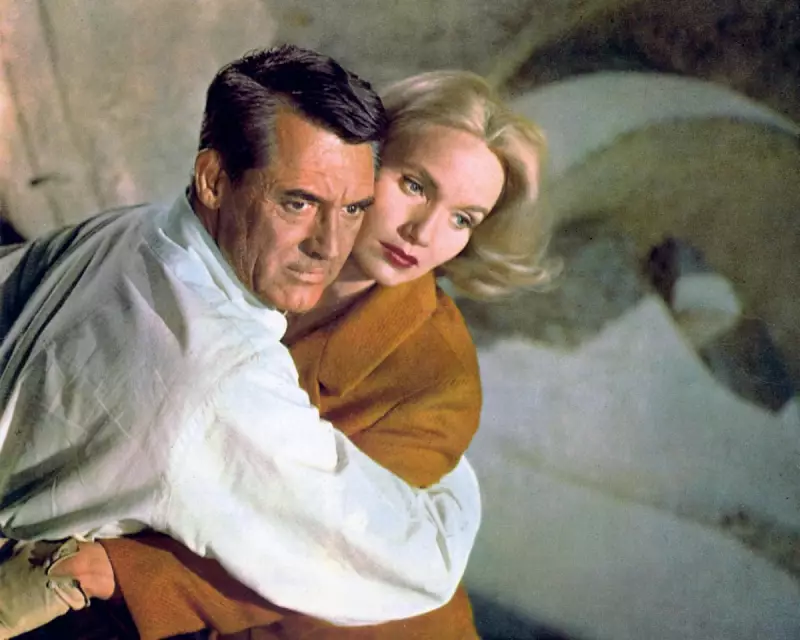
Picture this: you're Roger Thornhill, a successful and handsome advertising executive enjoying 1950s New York. You're having a casual bite at the Plaza Hotel when two impeccably dressed gentlemen kidnap you at gunpoint in broad daylight. You don't resist violently. Instead, you politely object as they escort you to their car, insisting they've mistaken you for someone called George Kaplan.
The Genesis of Cinematic Absurdity
This improbable scenario launches what many consider to be Alfred Hitchcock's funniest, most visually daring, and outright absurd film, North by Northwest. Released in 1959, the film arrived after a string of Hitchcock's celebrated Technicolor thrillers like Rear Window and Vertigo. Emboldened by his established success, Hitchcock leaned into the ridiculous, creating a work so self-assured it borders on self-parody.
All the classic Hitchcockian elements are present and accounted for: the suave Cary Grant as the lead, a mysterious blonde (the captivating Eva Marie Saint), an inexplicable MacGuffin (the elusive George Kaplan), and the director's signature cameo. The opening twenty minutes are dialogue-heavy, but once the central premise kicks in, the film becomes utterly irresistible.
Cary Grant's Underrated Comic Genius
At the heart of the film's brilliance is Cary Grant's performance as Roger Thornhill, which stands as one of the most underrated comedic turns of the twentieth century. Grant plays Thornhill as a man perpetually baffled by the conspiracy unfolding around him. Despite every character he meets clearly working against him, he maintains an almost heroic level of naivety, surprised by each new betrayal.
He is, in essence, a bronzed, impeccably suited Homer Simpson, blithely walking into every trap and believing he can simply talk his way out. You find yourself wanting to shout at the screen, urging him to see the obvious danger he's in.
Style Over Sense: The Hitchcock Formula
The plot escalates to glorious heights of illogic. There is no reasonable explanation for why Thornhill, pursued by a clandestine anti-government organisation, ends up free-climbing Mount Rushmore while being shot at from Abraham Lincoln's stony visage. Similarly, the film's most iconic sequence—the crop-duster plane chase in a barren cornfield—makes little sense upon scrutiny. Why wouldn't the villains simply shoot him?
This, however, is the core thesis of North by Northwest. Reason is secondary to spectacle. If it looks magnificent on screen and raises the stakes, logic can be conveniently sidelined. Hitchcock demonstrates his mastery by making the audience willingly accept every absurdity, much like Thornhill dusts himself off after each near-death experience and charges ahead with blind optimism.
Remarkably, despite being produced during the restrictive Hollywood Hays Code era, the film possesses a raw sexuality absent from many modern blockbusters. The chemistry between Grant and Saint is palpable in their train compartment, culminating in the film's infamous final shot: a steam train emphatically entering a tunnel, a visual metaphor that would be unthinkable in today's Marvel cinematic universe.
North by Northwest is a testament to Hitchcock's genius, a film where comedy, suspense, and visual splendour coalesce into pure cinematic magic. It invites viewers to suspend disbelief and revel in the sheer, glorious absurdity of it all, time and time again.
North by Northwest is currently streaming on HBO Max in Australia and available for digital rental in the UK and US.





